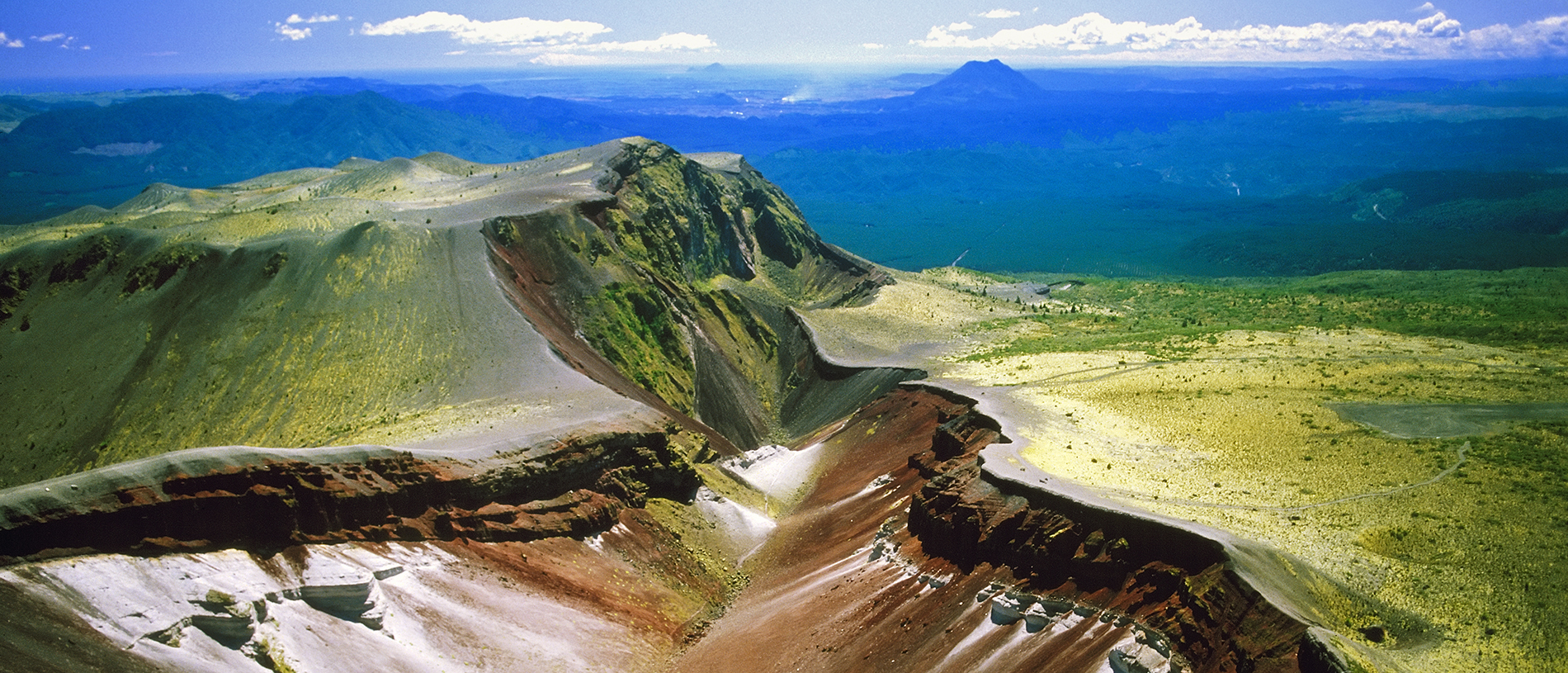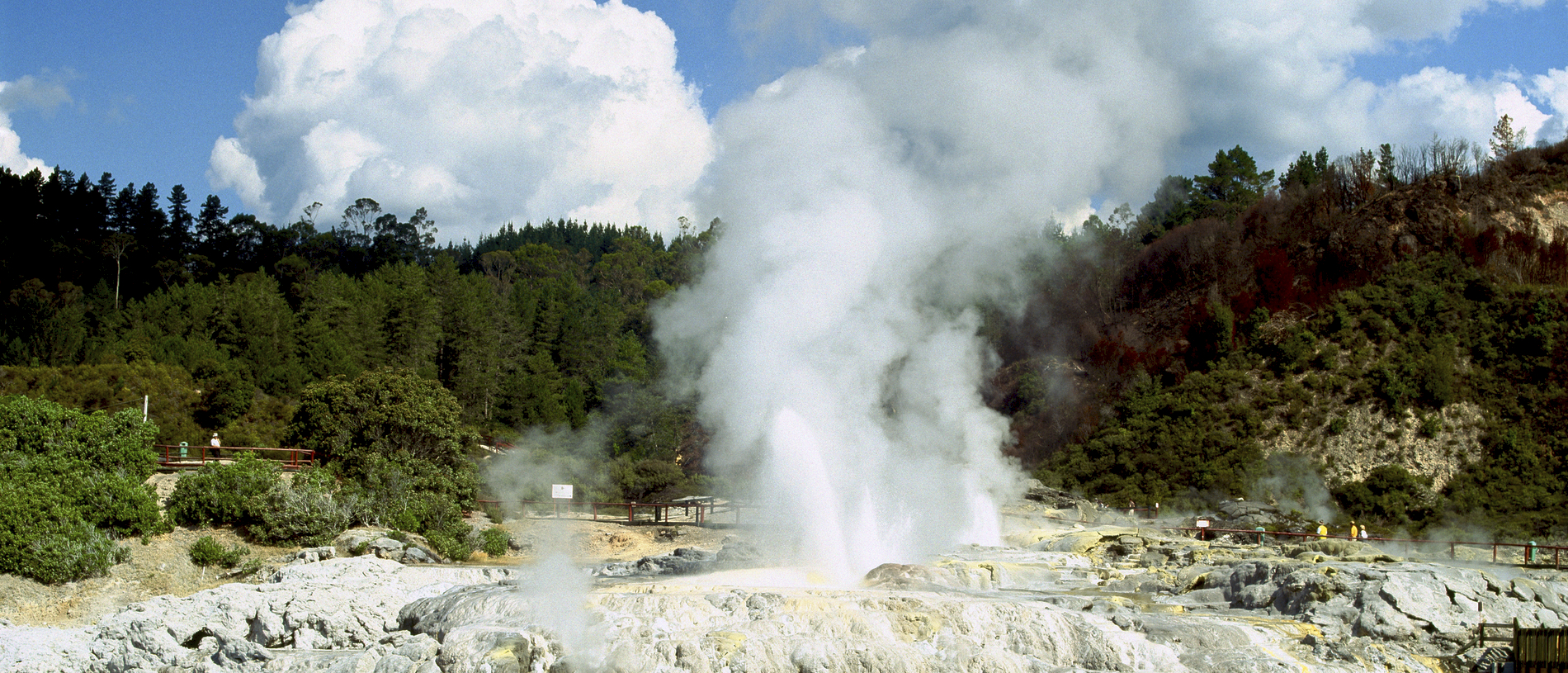
Mount Tarawera: sleeping giant
Lake Tarawera, at the foot of the ruins of Mount Tarawera, is the site of New Zealand’s creepiest ghost story.

When you consider how hard it must have been to make the transition from their tropical homeland to the decidedly sub-tropical rigours of the New Zealand climate, you can immediately understand the attraction of the Whakarewarewa valley for the first Polynesian settlers in New Zealand.
There was hot and cold – mostly hot – running water, spa baths, inbuilt cooking facilities and the entire valley featured underfloor heating. Luxury.
When the region overdid the whole geothermal thing in 1886 and Mount Tarawera destroyed the Pink and White Terraces, the raison d’être of their thriving niche in the tourism industry, the Tūhourangi and Ngāti Wahiao sub-tribes of Arawa upped sticks and shifted to Whakarewarewa, to try again with the natural attractions of the valley. It was a bit of a hit.
With fumaroles hissing, mud pools snorting and one of the seven geysers in the area letting fly every so often, visitors just couldn’t get enough. The displaced hapu made Whaka their home – and they’re still there.
Today, the Whakarewarewa valley is home to sophisticated tourist operations, featuring not only the thermal area – with the famous Pōhutu and Prince of Wales geysers – but also the well-designed cultural centre, Te Puia.
Both Te Puia, named for the undefeated fortress of the Arawa people, and the nearby Whakarewarewa Living Māori Village, provide an interface between visitors and Māori culture. There are cultural performances, showing off Māori song, dance and story, and tours designed to introduce visitors to Te Ao Māori, by guiding them through the natural wonders of the geothermal area, with guides relating all the while the legends and lore of the people of the land. They’ll even provide you with lunch, cooked in a hāngī where no fire is necessary, and with corn on the cob cooked in what resembles a pool of champagne.
Best of all, at Whakarewarewa, just as they don’t turn off the geysers and throw covers over the mud pools of an evening, nor do the guides at Whaka clock out at the great gate, Waharoa, jump in their cars and drive home at the end of the working day. They live here. Whakarewarewa is their home, and they’re proud to show it off.